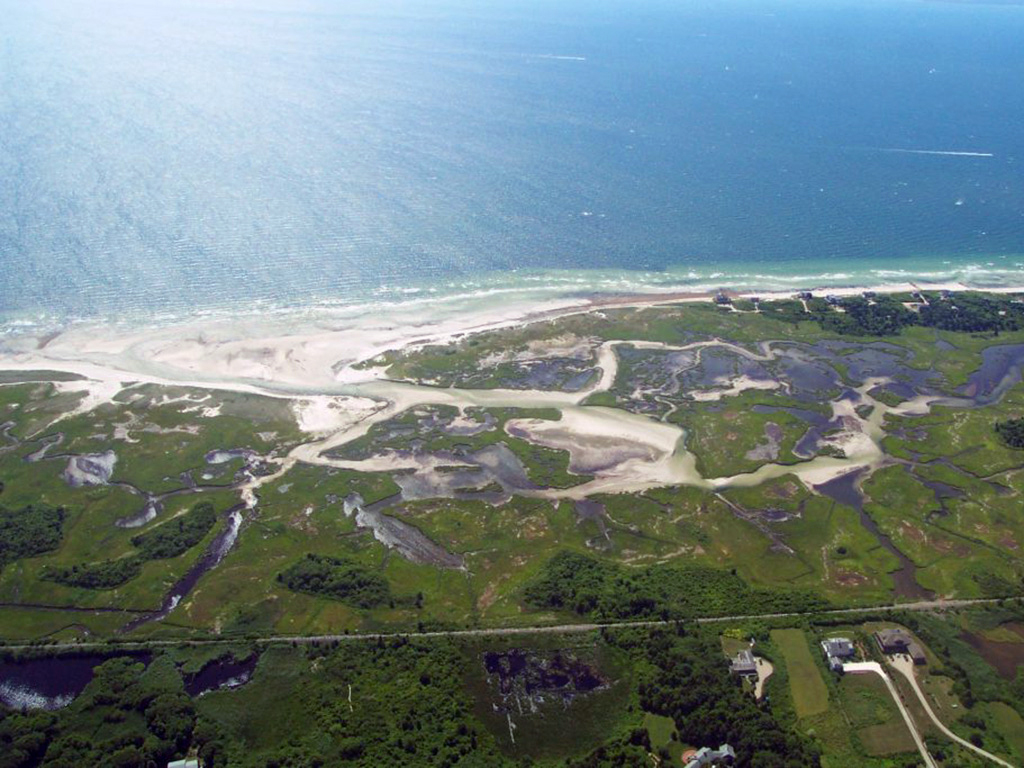搜索结果: 1-10 共查到“海洋生物学 salt”相关记录10条 . 查询时间(0.093 秒)
Salt marsh resilience compromised by crabs along tidal creek edges
coastal marshes ecosystem crab
2021/8/10
Coastal marshes are vulnerable to erosion caused by rising seas, pounding waves, and tidal flows. In California's Elkhorn Slough, these vulnerabilities are made worse by superabundant crabs found at t...

Salt marshes' capacity to store carbon may be threatened by nitrogen pollution(图)
Salt marshes capacity carbon nitrogen pollution
2019/10/18
Deep in the waterlogged peat of salt marshes, carbon is stored at much greater rates than in land ecosystems, serving as an offset to climate change caused by carbon dioxide (CO2) build-up in the atmo...
Nitrogen enrichment increases net silica accumulation in a temperate salt marsh
Nitrogen enrichment increases net silica accumulation a temperate salt marsh
2014/4/2
Two New England salt marshes exposed to different N availability were assessed seasonally for 1 yr, creating the first complete salt marsh Si budgets. Triplicate seasonal measurements were collected f...
The “salt wedge pump”: Convection-driven pore-water exchange as a source of dissolved organic and inorganic carbon and nitrogen to an estuary
salt wedge pump Convection-driven pore-water exchange source of dissolved organic inorganic carbon nitrogen to an estuary
2014/4/4
Hypoxia and anoxia in coastal waters have typically been explained by the respiration of sinking organic matter associated with nutrient over-enrichment and phytoplankton blooms. Here, we assess wheth...
Hypoxic events stimulate nitrogen recycling in a shallow salt-wedge estuary: The Yarra River estuary, Australia
Hypoxic events stimulate nitrogen recycling shallow salt-wedge estuary The Yarra River estuary Australia
2014/4/4
The Yarra River estuary is a salt-wedge estuary prone to periods of stratification-induced anoxia and hypoxia (O2 < 100 μmol L−1) during low-flow events. Nitrate reduction pathways were examined...
The ‘‘salt wedge pump’’: Convection-driven pore-water exchange as a source of dissolved organic and inorganic carbon and nitrogen to an estuary
salt wedge pump Convection-driven pore-water exchange a source of dissolved organic inorganic carbon nitrogen to an estuary
2014/4/3
Hypoxia and anoxia in coastal waters have typically been explained by the respiration of sinking organic matter associated with nutrient over-enrichment and phytoplankton blooms. Here, we assess wheth...
We constructed water, salt, and nutrient budgets for San Francisco Bay and used them to analyze the net biogeochemical performance of the bay. The bay was subdivided into three sectors, North, Central...
Why the limiting nutrient differs between temperate coastal seas and freshwater lakes: A matter of salt
limiting nutrient differs temperate coastal seas freshwater lakes
2014/5/19
Comparison of bottom-water chemistry in the marine-limnic habitat gradient shows greater phosphorus availability in marine waters, primarily because of enhanced iron sequestration by sulfide. In the o...
Quantification of macrobenthic effects on diagenesis using a multicomponent inverse model in salt marsh sediments
Quantification of macrobenthic effects diagenesis using multicomponent inverse model salt marsh sediments
2014/5/19
Using a multicomponent inverse model, we quantified the rates of organic matter (OM) remineralization and the relative importance of major terminal electron acceptors [Fe(III)-(oxy)hydroxides and SO4-...
Benthic metabolism and sulfur cycling along an inundation gradient in a tidal Spartina anglica salt marsh
Benthic metabolism sulfur cycling inundation gradient tidal Spartina anglica saltmarsh
2014/5/22
Central aspects of carbon and sulfur biogeochemistry were studied along a transect extending from an unvegetated mudflat into a Spartina anglica salt marsh. Conditions along the transect differed with...


